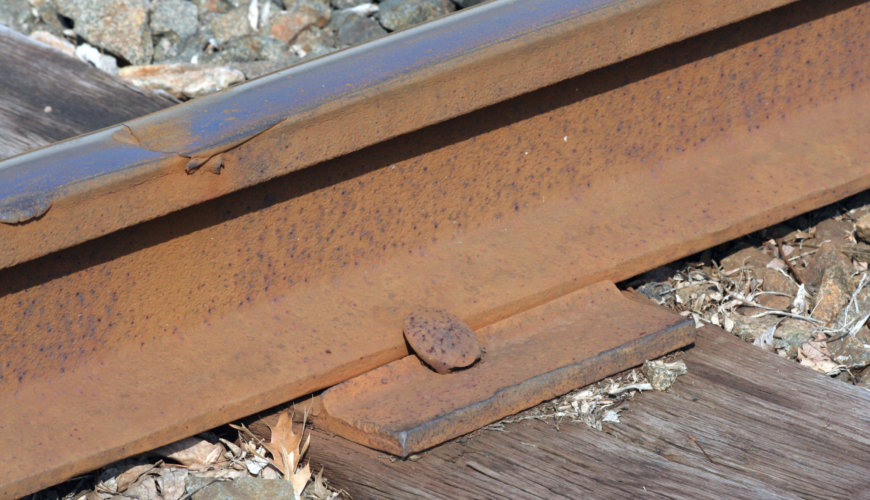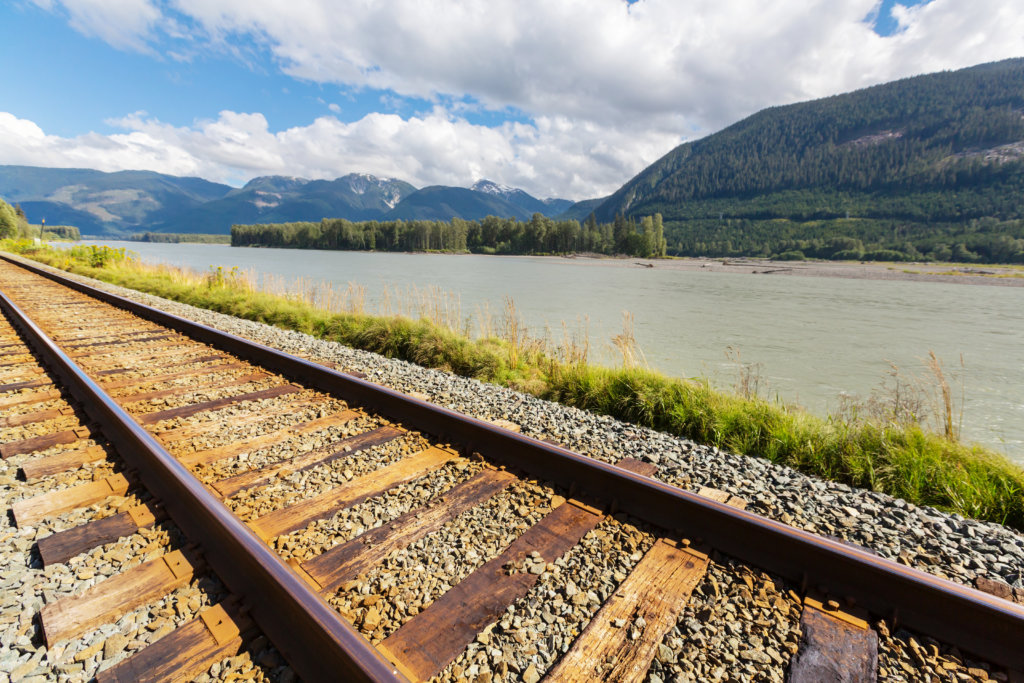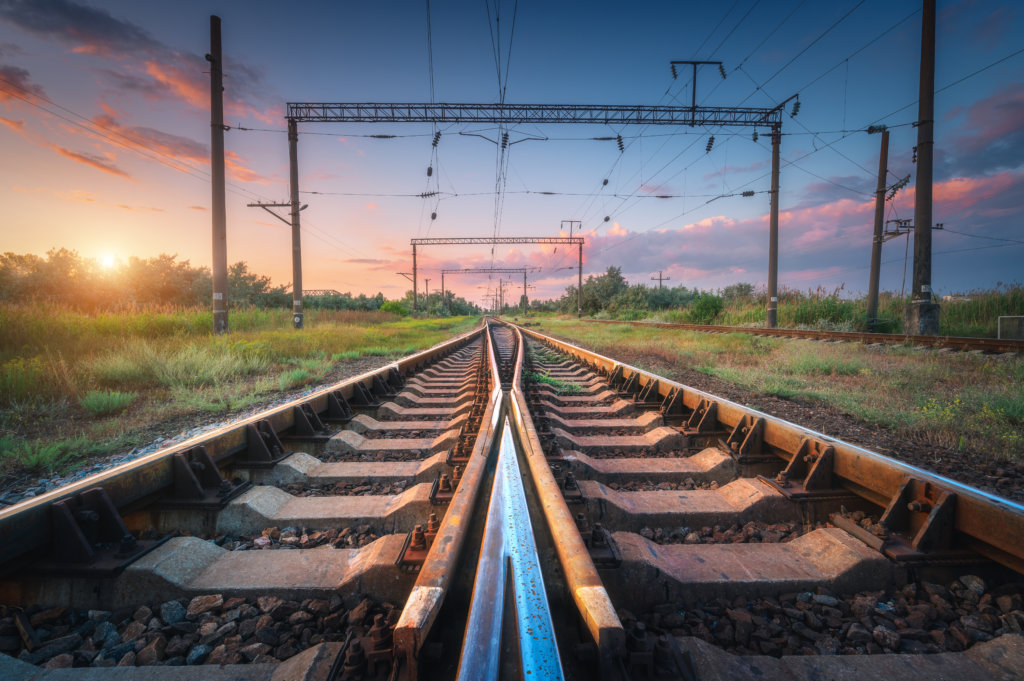
Understand the wear and tear of railroad tracks
Since the implementation of the rail system in Brazil, a series of productive and economic advances have been possible. Trains have become important partners in the development of cities, states and, of the country as a whole, acting in the connection between people from different regions and in the transport of cargo and goods, supplying diverse economic sectors of society. Unfortunately, the railroad lines have been suffering for some time from a major turbulence caused mainly by the lack of investment in new construction and the total abandonment of lines already built.
The data collected by the National Land Transport Agency (ANTT), about two years ago, show frightening data. In this survey it is pointed out that about one third of the entire Brazilian railroad line is completely out of use, with all its structure, like the railroad tracks, deteriorating and being completely without functionality.
A survey by Revista Ferroviária, in turn, points out that around 57% of the railroad network has been left out. This means that, according to the magazine, more than half of the line, which could be used for the country's economic development, is unused, which implies waste of land and resources.
The main structure of a railroad track, which allows trains to move the wheels, is the railroad tracks. It is essential that the construction of the tracks of a railroad is done properly, in accordance with the specifications contained in the regulatory standards, especially with regard to the weight of the load supported.
As we have shown, many railroads in Brazil are completely abandoned and have not been maintained for a long time. In part, these abandonments may be the result of problems such as strong competition with the road sector, but most of them are linked to wear and tear on the railroad tracks.
From now on, we will present you with some details about the types of wear and tear that the tracks of a railroad can suffer, addressing from its composition to ways to avoid its degradation, which is so recurrent on Brazilian railways. So, stay with us and check out more details!
Content Index
Rail composition

During the history of our railroad line, the profiles of the tracks have been modified to better meet the demands of the trains. Currently, the rail profile used is the vignole, which was the one that best adapted over time. Railway tracks are classified by weighing the meter of the bar. That is, the acronym TR is accompanied by the weight, in kilograms, of the footage of a single piece. The most common weighings are:
- TR 32;
- TR 37;
- TR 45;
- TR 57;
- TR 68.
The weighing of the track is entirely linked to the amount of weight that the track is capable of supporting in relation to the axles of the train cars. Therefore, it is essential that the train car that will pass on a railroad line is in accordance with the supported limit.
For weighing the axles, loads and other components of the wagons, railroad scales are installed on the railroad network. Scales can be both static (weighing with the train stopped), and dynamic (those that weigh with the train in motion), and dynamic scales are currently the most used in the area, since they perform the weighing without causing a delay in the journey.
The weighing information of the wagon is captured by an electronic system installed on the scales that checks and sends the obtained data to a specific data center. Based on the value obtained, this data center determines if and what actions need to be taken. The use of wagons that exceed the limits established on the line can cause a series of problems, such as wear on the materials of the railroad tracks. So, it is important to understand what types of wear are and how they can occur. Check it out below!
Billet wear

The composition of a vignole profile rail bar has three main parts: the skids or the lower part, which is fixed and exercises the support of the composition, the core, which makes the connection with the skates and the upper part, and the boletos, which are the top trains, where trains effectively move their wheels.
As the part that has direct contact with the wheels of the train, boletos suffer constant friction and pressure that cause greater wear and tear on their structures. Thus, in the quest to better understand how and where rail wear occurs, experts divided the billet wear into three stages: side wear, vertical wear and wave wear.
Side wear

The lateral wear can be understood mainly by anomalies in the structures of the parts of the tracks with small curvatures. This problem occurs when the pressure exerted by the train wheels passes through this curved structure and, each time it occurs, it causes the material to undergo small changes that can even result in the break of the track.
Vertical Wear

This type of wear affects the straight lines of the rails for a number of factors, among them: the scraping of the rails when they come into contact with the train wheels, when loading the entire weight of the wagon structures; or because of the corrosion suffered by natural adversities, since the tracks are totally exposed to natural weather conditions such as excessive sun, which overheats the material of the railroad tracks, or acid rain. When this material suffers from corrosive elements, the material is completely worn out and can create a fracture in its structure.
Wave wear

Wave wear is caused by the heavy traffic on the railways, which generates waves on the railroad tracks. This wear is one of the most problematic, as it can cause deformations in the trail, deterioration of the materials of the rails and trains, displacement of the skid fixing devices and even damage and breakage of the positioning compositions, such as railroad ties.
How not to suffer or at least reduce wear and tear?

There are different ways and recommendations for how the rails should be built in order to avoid further wear on the materials. Due to the strong demand, pressure and constant friction of the wheels with the rails, exposure to high temperatures and humidity, it is natural that the rails are damaged over time. However, it is possible to mitigate some of these wear and tear through actions that, although simple, are fundamental.
First, it is essential that the installation of the rails is in accordance with the standards established for your railroad line. To avoid lateral and vertical wear, it is recommended that the rail be elevated, preventing it from coming into constant contact with all the curved and straight structures you encounter along the way. Another way of ensuring greater protection for the system for moving trains on platforms is, for example, carrying out the construction of the track with the most resistant and effective materials available on the market, which were specially designed for the demand of these spaces.
Track maintenance

Due to the factors mentioned, it is essential that constant maintenance occurs. Track wear is one of the main causes when talking about the problem or damage that affects trains, but be aware that this can and should be avoided.
There are some strategies and machines that are used to assist professionals when it comes to performing proper maintenance on the railroad tracks, such as:
- Ultrasound;
- Stress Relief;
- Billet grinding;
- Welding.
Conclusion
As we noted throughout the article, the rails are likely to suffer from wear and tear over time. The constant maneuvering during the train's route generates high pressures in the curved and straight parts of the platform and several problems, among them, the damage to the durability of the material. Therefore, there are techniques and instruments that help to reduce the likelihood of wear due to the maneuvers performed, such as simple weighing of the wagons. In these cases, Massa's railroad scales are excellent options for weighing wagons, since they do not require trains to perform maneuvers and delay their journey to be weighed.
Complementary sources for supporting texts:
Monografia da Fernanda Macedo












